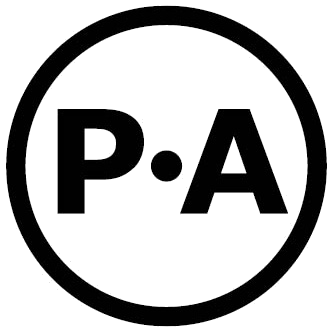ABOUT
What do we do?
We are a Rotterdam-based creative office for architecture, development and urban strategy. Personal Architecture (P·A) initiates, designs, and manages the construction of bold and imaginative buildings.
What can we do for you?
P·A's work sits at the crossroads of design (architecture), development (initialization, investment, and construction management) and urban strategies (knowledge of the people, places, and market we create for). From initial concept, to construction, through to occupation and use, we engage clients in a constant dialogue to clarify priorities and develop futureproof, cost-effective, and inspiring spaces.
Looking beyond the brief, we aim to create spaces that not only meet current needs, but have lasting impact and improve quality of life at multiple scales. To this end, there are few design challenges and building types we won’t take on. However, integral to every initiative we undertake, is not the kind or size of building, its use or its scope, but rather the client's ambition to create a truly exceptional project that serves its people and its place.
P·A strategises alongside clients to explore how buildings can be used, reused, shared and maintained. With over ten years of demonstrated design and construction management experience, and a vetted contractor network, we ask the right questions at the right time, and ensure an efficient and well-orchestrated design and construction process.
Want to know more? Have a look at our FAQ page, or contact us to schedule a visit.
HOW WE DO IT?
We endeavor to add a personal touch to our services. In short, we make it personal, architecture. In close collaboration with clients, contractors, consultants and end-users our work is structured by an open process supported by a forthright and honest interaction.
We believe in the power of new technologies in facilitating this process. BIM modelling and real time Virtual Reality (VR), have fundamentally changed how we design and provide considerable additional value to design services. VR facilitates user-centered design and testing our designs, helps to make cost-efficient, informed and integrated design choices early in the process and demystifies the building process more than traditional 2D-drawings can. By using our BIM and VR design tools, we involve all stakeholders, clients, consultants, and end-users in the design process, getting the right information at the right time.
Read more about VR’s benefits, and how P·A uses it to enhance our design services here.
three divisions
Personal Architecture is comprised of three core disciplines: architecture, development, and urban strategy
Personal Architecture
Designing vital buildings and spaces for private, commercial and public purpose is P·A's core focus.
Development
The development branche initiates the investment, design and development of high quality projects, with high ROI.
URBAN STRATEGY
As urban strategists, we apply design thinking, research, and innovation to urban transformation challenges.
EXPERTS IN VITAL BUILDINGS
P·A's mission is to realize vital buildings. These are buildings that enhance quality of life, that invite occupants to engage, and that enliven their immediate surroundings, piquing the curiosity of passersby.
No man is an island, and no building is either. Vital buildings foster interaction by creating synergy between building program, occupants, and public adjacencies with shared spaces and activated street frontage. They integrate solutions to urban challenges to address heat stress, water management, parking and mitigate air pollution. They are energy efficient, and maximise space with an energetic buzz. Finally, they are inherently multifunctional, and their amenities or program have a complementary relationship.
P·A redevelops and reprograms existing buildings with the understanding that all buildings have the potential to be vital buildings, spaces, and places that are more than the sum of their parts. This might mean simply restoring original quality, while updating the building envelope to meet modern standards of comfort and energy efficiency. In other instances, inserting a new component that is synergistic with the existing building context provides new vigour. Finally, drastic interventions can catalyse the transformation necessary to revitalise decommissioned buildings and declining neighbourhoods.






